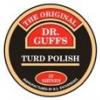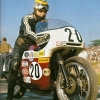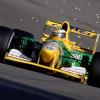In French we tend to refer to "natural" or "artificial" circuits …..a "natural" circuit being one which sticks to the natural environment , not necessarily on open roads …..in that sense Charade , Mosport, the "new" Spa or the "real" Nurburgring would be considered as "natural" , although purpose-built…..whereas the Albert Park, Montreal or Adelaide, although mostly made of public roads, would be deemed as "artificial"…But of course, there is some subjectivity involved..... Anyway……
Let's remember that the safety crusade of the 70's Grand Prix riders was originally aimed at taking the dangerous circuits (wether natural or artificial) out of the "compulsory" rounds of the World Championship, in order not to force the riders who were (legitimately) bothered about the safety issues to race on them for the sake of scoring points . There was no call for a "ban" of dangerous tracks, but only a plea to leave the riders with the open choice of wether or not to run on them . The situation was a bit touchy since the Grand Prix organisers used to take advantage of the obligation that World Championship contenders had to enter their meetings to give them very minimal starting money. So the riders also needed to enter well-paid non-championship races in order to make a living. So, the same men who strongly objected to seeing Grand Prix organised at Salzburg, the Nurburgring, Opatija or Imatra, had no problem with entering meetings on pure road courses like Mettet, Chimay, Raalte , Schwanenstadt or Macau…. But then , it was their choice to take part or not , and they could also "take it easy" and not push to the limit, since there were no points at stake and they had cashed the starting money. Phil Read's victorious return to the TT once it was out of the World Championship, or safety crusader Barry Sheene's terrifying duels with Mick Grant at Scarborough, are only a few examples.
I have a lot of admiration for today's "real road racers" , as they call themselves ( they even have a dedicated website at
http://www.realroadracing.com ) , and indeed over those last decades it has become very much of a strictly British/Irish thing . I admire their skill and bravery, but I can't help thinking that the price to pay is way too high. Since the 70's , the number of riders maimed or killed in World Championship rounds has thankfully significantly dropped…..while at the same time , "real" road racers ( and even the best of them, Joey Dunlop or David Jefferies to name only two ) continued to lose their life at a tragic pace, and Grand Prix stars such as Tom Herron, Jon Newbold, John Williams or Pat Hennen paid the high price for the "thrill" of occasionally blasting around Dunrod or the Isle of Man…
Which famous road racer was it who used to say "you never see a tree crossing the road" , meaning that it was the rider's responsibility to adapt his riding to the trackside conditions ? There is certainly some truth in that , but even the most careful rider can be caught by an unplanned hazard. I had a conversation a few months ago with Jean-Claude Meilland, a midfielf French Grand Prix rider of the 70's whose career was effectively ended by a horrifying crash on the Isle of Man. He told me how much he had dreamed of running the TT, how careful he had been in preparing his bike to minimize any risk of mechanical failure, and how much he had firmly decided to take it easy and never push close to the limit. What he could not account for, however, was the fellow rider who collided into him and sent him flying into the wall of a trackside house , putting him in a coma for five days, which he thankfully survived……
Anyway, sorry for rambling on……
























